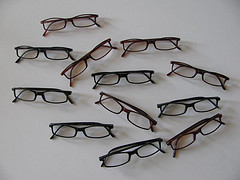 Nearsightedness or myopia is a vision problem that around one-third of the population experiences. A recent study revealed that nearsightedness is more common among Americans today than it was thirty years ago. People with a hard time reading highway signs and seeing distant objects but could see well up close like sewing or reading are considered as nearsighted persons.
Nearsightedness or myopia is a vision problem that around one-third of the population experiences. A recent study revealed that nearsightedness is more common among Americans today than it was thirty years ago. People with a hard time reading highway signs and seeing distant objects but could see well up close like sewing or reading are considered as nearsighted persons.
The nearsighted lens prescription is written in minus power. A contact lens or spectacle power will have a minus sing in front of the number. This indicates the amount of prescription that is needed in the lens, which is also called a diopter. The lens power ranges from 0.00 to 20.00 diopters or higher and prescribed in .25 centimeters. A sample of a nearsighted lens power is -2.00 or -2.25. The higher the number, then the thicker the lens is.
Most nearsighted lenses are made from plastic but are also available in several materials. Glass is the heaviest and not often used for nearsighted prescriptions. An ideal material is the polycarbonate for nearsightedness since the lenses and lighter and thinner and more shatter resistant compared to glass or regular plastic. Another option is called photochromic. It is a lens that grows darker outdoors and lighter when indoors. These lenses are useful if one has a stronger prescription and do not like to switch glasses each time that he or she goes outside or inside.